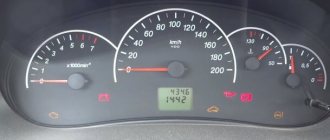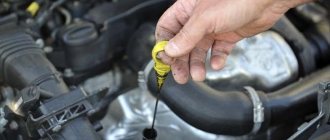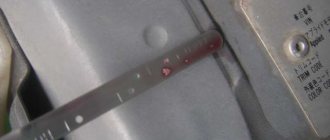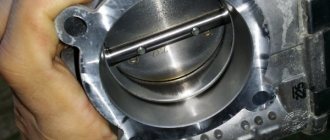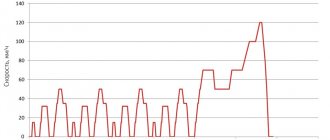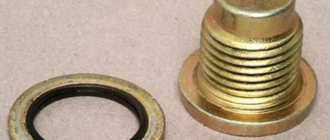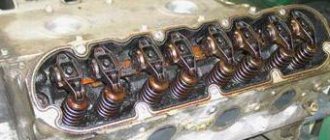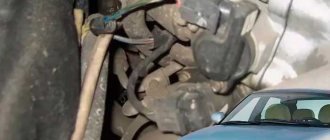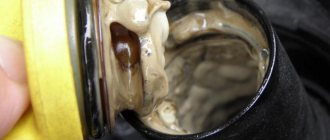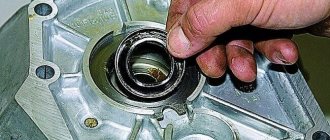Motor oil performs very important functions in the lubrication system of a car engine. Its main task is to create a film with a low coefficient of friction on the surfaces of contacting parts, reducing their wear. The lubricant effectively participates in the cooling process of the piston group and gas distribution mechanism. Oil also transports carbon deposits, metal microparticles formed during friction of metal surfaces, to the car’s filter system.
Where does the oil go?
The correct operation of an internal combustion engine largely depends on a sufficient amount of lubricant. It is used to reduce friction between moving parts. The greatest friction, as a rule, is in the piston group of the power unit. Since a high temperature is constantly maintained in the internal combustion engine, a certain part of the lubricant burns, being removed with the exhaust gases or deposited on the walls of the combustion chamber, valve seats or on the piston rings.
The figures mentioned above regarding engine oil consumption are approximate: for each car this indicator is strictly individual and is prescribed by the manufacturer in the technical documentation for the vehicle.
High fuel consumption, complaints “the car is eating lubricant” are a sign of engine malfunction. The main reason in most cases is simple wear and tear. The first signs are the appearance of liquid in the ventilation system, from where, in the absence of proper care and repair work, it enters the air filter. This happens due to the increase in crankcase gas pressure, which increases as the engine wears, which pushes lubricant into the breather.
A turbocharged engine consumes liquid in huge quantities in most cases due to wear on the turbine rotor bushings. Accordingly, it is important for owners of such cars not only to monitor the condition of the engine, but also the turbine.
Useful information about violations of lubricant consumption in a car
Troubleshooting
It is easier to deal with the problem in question if it is caused by poor-quality fuels and lubricants or improper operation. In the first case, it is enough to flush the engine and change the oil.
In the second case, it is important to disassemble the technical documentation of the car and follow the recommendations for shifting gears.
Other causes can be eliminated in various ways:
1). Leaking gaskets, oil seals or leaking oil seals are replaced. The procedure can be carried out on your own.
2). A worn piston group is replaced at a service station. The only exceptions are GAZ and VAZ cars. If you have the tools and knowledge, you can do the repairs in the garage.
3). If the exhaust looks abnormal, black smoke comes from the exhaust system, this may not be due to increased oil consumption, but due to an incorrectly set ignition.
As a result, the remaining oil and fuel do not burn completely, which leads to the formation of soot. The standard solution is to check and adjust the ignition system.
To reduce oil consumption, it is necessary to fill in only those additives that are suitable for a specific engine type.
All about automobile oils
Reasons for increased oil consumption
There may be several reasons why the power unit consumes lubricant. The most common reason that Priora eats lubricant is low-removable caps. They are installed in the valves of the gas distribution system. You need to deal with them carefully, as unusual situations may arise. For example, the likelihood of hardening of the cap seals increases significantly due to a poorly warmed-up engine, which is especially true for priors with high mileage. A frozen cuff will not fit tightly enough into place, causing lubricant to flow freely under the bushing. The result of this will be either lubricant entering the combustion chamber or into the exhaust system, followed by the formation of carbon deposits on the spark plugs or interruptions in engine operation.
Engine oil consumption rates according to the manual
Lada Priora is equipped with four power units of different modifications and each of them has a certain oil consumption:
- VAZ-21116 (8cl, 1.6l, 87hp) – 50 g/1000 km
- VAZ-21126 (16cl, 1.6l, 98hp) – 50 g/1000 km
- VAZ-21127 (16cl, 1.6l, 106hp) – 50 g/1000 km
- VAZ-21128 (16cl, 1.8l, 98hp) – 300 g/1000 km
As you can see, for the first three power units the consumption rate does not exceed 50 g per 1000 kilometers, and the last engine, which is a modernized version of the engine from the VAZ 21127, consumes much more.
The key feature of the 1.8-liter engine is that, while the block height remained unchanged, the piston stroke was increased due to a different crankshaft. This was realized using short connecting rods. This design solution led to increased load on the following engine elements:
In some cases, if there is excessive wear of parts of the Priora power unit, there is oil in a volume of up to 2-3 liters per 1000 kilometers.
Piston rings
Another reason why a car eats special fluid is the piston rings. Each piston has three rings - an oil scraper ring on the bottom and two compression rings on top. The automaker uses compression rings to reduce the distance between the cylinder wall and the piston itself, thereby achieving maximum energy transfer to the engine. To reduce the friction created, lubricating fluid is supplied to the compression rings, which is then removed by oil scraper rings. The wear of these rings is the reason why the Priora eats the special fluid - they simply leave excess lubricant on the cylinder walls. So the reason for increased waste of lubricant may be piston rings, but not always engine malfunction.
Engine oil operation
Over the course of its entire “life,” Priora is subjected to a huge number of heating-cooling cycles. Accordingly, a high load falls on all components and parts of the motor. A decrease in the elasticity of the piston rings or their wear can cause a phenomenon such as flutter. This phenomenon has been poorly studied, but it is known that during engine operation, the rings move around the piston radius with a certain frequency, but at the same time they can jump from one edge of the piston groove to the other. Such sharp jumps are the reason that the Priora eats large quantities of lubricant, but does not smoke, although a clear sign of such a malfunction is the bluish-colored exhaust smoke.
Oil waste
The car can “eat” consumables due to burnout. This is due to the fact that the oil indicators do not correspond to the characteristics of a particular engine. An oil product that is too liquid will remain in the cylinder block and burn out, while a petroleum product that is too thick will envelop the moving parts with a dense film, significantly complicating their movement. All this will lead to increased oil costs. In view of this, you need to use only the lubricant recommended by the car manufacturer.
Severe burnout can occur due to worn valve seals. Identifying this problem is quite difficult. To prevent the lubricant from smoking, that is, to stop burning, the seals need to be replaced. The piston rings also need to be changed. If they wear out significantly, engine repair may be required.
Low quality motor lubricant
The reason that the engine consumes liquid may be low quality lubricants or the wrong type. For each car, including the Priora, there is a certain type of lubricant, but if it is selected incorrectly, consumption jumps sharply. For example, reduced viscosity can cause the piston rings to be unable to collect all the lubricant, causing it to settle on the cylinder walls and burn along with the fuel. As a result, combustion products either come out along with the exhaust in the form of bluish smoke, or settle in the form of soot on the spark plugs. The consequence may be coking of the rings, when the liquid settles in a thick layer on the engine components.
Body and exterior of the 2021 Priora
During the modernization of the VAZ 2170 style, there were no significant changes in body parameters.
| Dimensions | Linear dimensions |
| Length | 4.35 m |
| Width | 1.68 m |
| Height | 1.42 m |
| Wheelbase length | 2.49 m |
| Front wheel track width | 1.41 m |
| Rear wheel track width | 1.38 m |
| Clearance | 16.5 cm |
The trunk volume, as for a sedan, is quite large: 430 liters. The car has front-wheel drive, that is, the driving pair of wheels is the front one. Body type: sedan with four doors.
The appearance of the Lada is characterized by simplicity and sophistication. Despite repeated restyling, AvtoVAZ did not make fundamental changes to the exterior of the Priora. The front of the car is convex, the headlights have a triangular rounded shape, and their image is complemented by stylish head optics. The air intake is separated from the radiator grille by a license plate, and a massive front bumper completes the moderate image of the front end.
In profile, smoothed body shapes are observed. The stern turned out to be stylish due to the large rear lights, chrome trunk handle and massive rear bumper.
Natural wear and tear
The reason that a car eats lubricant may also be banal natural wear and tear of the engine and all components. As a result, the lubricant will be consumed several times faster than during normal vehicle operation. Engine wear can cause both deformation of the cylinder walls and the appearance of chips and cracks, burning of gaskets and failure of oil seals. Motor fluid can be deposited in engine components, but it can be too difficult to determine its exact excess consumption - it depends on the level of wear of the power unit and other vehicle systems.
Reason one
If, after running the engine at idle speed for several minutes, you press the gas pedal to the floor a couple of times, a cloud of bluish color may burst out of the exhaust pipe. With an increase in the number of presses, it will disappear, but this is a clear sign that there are problems with the valve stem seals. Oil leakage while the engine is idling and its sudden combustion in the combustion chamber leads to the appearance of bluish smoke and, accordingly, an increase in its consumption. However, replacing the caps does not always solve the situation: often the problem can be in the valve bushings - it is advisable to change them together with the caps.
The main reasons why an internal combustion engine consumes oil excessively
So, below is a list of reasons why a car engine begins to eat oil too quickly and in large quantities. I would like to immediately note that this list is not complete and is made on the basis of the personal experience of many experienced owners and specialists.
- Increased wear of the piston group: compression and oil rings, as well as the cylinders themselves. The gap between the parts becomes larger, and therefore oil begins to enter the combustion chamber in relatively small quantities, after which it burns along with gasoline. With such symptoms, you can usually notice either heavy oil deposits or a black coating on the exhaust pipe. A major overhaul of the engine, replacement of piston group parts and boring of cylinders if necessary will help eliminate this problem.
- The second case, which is also quite common, is wear of the valve stem seals. These caps fit onto the valve from the top side of the cylinder head and prevent oil from entering the combustion chamber. If the caps become leaky, the consumption will correspondingly increase and the only solution to this problem will be to replace the valve stem seals.
- There are times when everything seems to be fine with the engine, and the caps have been changed, but the oil continues to fly away into the pipe. Then you should pay special attention to the valve guides. Ideally, the valve should not dangle in the bushing and the gap should be minimal. If the play is felt by hand, and especially strong, then it is necessary to urgently change these same bushings. They are pressed into the cylinder head and it is not always possible to do this at home, although most succeed.
- Oil leakage through oil seals and gaskets in the engine. If you are sure that everything is fine with the engine, and cannot understand why the oil is leaking, you should pay attention to all the gaskets, especially the pan. And also check the seals to see if they are leaking. If damage is found, the parts must be replaced with new ones.
- It is also worth keeping in mind that your driving style directly affects how and how much oil your engine will consume. If you are used to a quiet ride, then you should not have any problems with this. But if, on the contrary, you squeeze everything out of your car that it is capable of, constantly operate it at high speeds, then you should not be surprised at the increased oil consumption.
Reason two
The appearance of bluish smoke while going uphill, when you have to constantly press the gas pedal. At the same time, the driver may not see the bluish haze as such, but it is clearly visible to the “colleagues” driving behind. Such a thin stream of blue smoke is a sure sign of a malfunction of the piston system and increased engine oil consumption. Many auto repairmen are of the opinion that increased waste of lubricant on the highway is a problem with the piston system, which may include the following:
- Piston rings and their wear.
- The groove for the piston rings is worn out.
- Occurrence of piston oil rings. Eliminated by adding additives.
- Incorrect placement of compression rings. Eliminated by removing carbon deposits or adding additives.
- Exit from standing cylinders. Leads to decreased engine compression. It can be eliminated either by lining or by boring the cylinder. There is a minus: the engine life is reduced.
- Piston failure. It can only be eliminated by installing new ones.
The problem of the Priora “smoking” can be solved by simply adding additives to the special fluid or fuel that eliminate the occurrence of piston rings. If this does not help, you can use the old method: fill the cylinders with acetone diluted with engine lubricant and kerosene. After this, a day later, the mixture is drained and a new lubricant is poured. If this does not help, then all that remains is to disassemble and clean the engine.
Useful information about engine lubricant consumption Reason three
The car smokes a lot or there is no definite pattern in the appearance of smoke. In the case of turbocharged engines, the cause of the appearance of bluish smoke may be a malfunction of the turbine, the system for changing the geometry of the intake manifold or the crankcase ventilation system, in the case of a diesel engine - lagging injection of the fuel mixture.
- Turbine failure. The reason for this may be the destruction of the oil seal in the turbocharger, as a result of which the lubricant will burn in the exhaust pipe. As a rule, it flows very abundantly, so that it can even drip from the muffler.
- Damage to the ventilation system. The use of low-quality motor fluid often leads to its complete destruction. The products of its destruction are deposited on the internal surfaces of the engine, forming so-called carbon deposits. A large amount of carbon deposits clogs the oil separator, which leads to a deterioration in the process of purifying crankcase gases from lubricant. As a rule, highly accelerated engines accumulate a large amount of it and then dump it into the cylinders. Such discharges lead to the release of large amounts of bluish smoke. These signs indicate a malfunction of the ventilation system.
- Fluctuations in the geometry of the intake manifold. Some engine models have a design in which the drive of the overlapping air channels of the dampers is located inside. Accordingly, oil mist accumulates there. If the servomotor breaks down, lubricant from the engine enters the intake manifold. This results in blue smoke. This is eliminated by turning off the servomotor and eliminating the geometry as such. The damper axles will naturally stop moving freely, which will reduce fuel waste. The reason for this is most likely that the gaps between the head housing and the axles are clogged with carbon deposits, which reduces leakage.
Restyling
In 2013, an updated version of the Lada Priora was presented in Tolyatti. It is worth noting that even before the official debut, pictures and videos of new items appeared on the Internet.
In terms of exterior design, the car has not undergone significant changes. The reforms slightly affected the bumpers, radiator grille, and moldings. But the rear lighting optics have acquired LED lamps, which provide brighter light compared to conventional ones and are also more durable.
The interior looks more modern due to a different layout of the instrument panel, as well as the multimedia system screen. The analog chronometers on the center console disappeared, and in their place was a storage niche.
Do I need to change the oil when consumption is high?
Increased motor fuel consumption
Often, car enthusiasts, after diagnosing high waste of motor fluid, wonder: is there any point in completely changing it or is it enough to just finish it off from time to time? The main argument in favor of the fact that it is pointless to carry out a complete lubricant change is that during the service period the same amount of lubricant passes through the engine.
In fact, a complete replacement must be carried out in accordance with the technical documentation. The main function of the lubricant is to reduce friction and clean engine components from combustion products. As a rule, they settle either in the pan or in the oil filter, but are not removed. Over time, the amount of carbon deposits increases, and constant addition of lubricant only compensates for the amount of contaminated lubricant.
